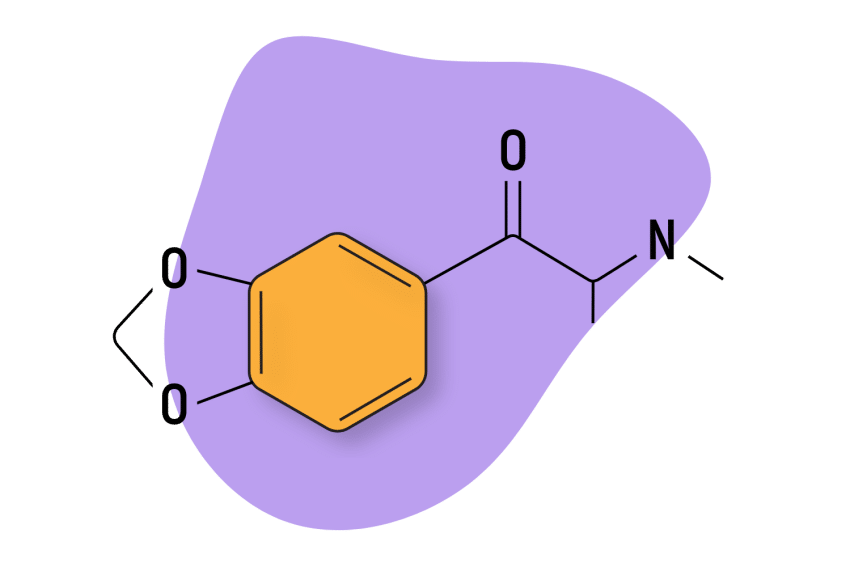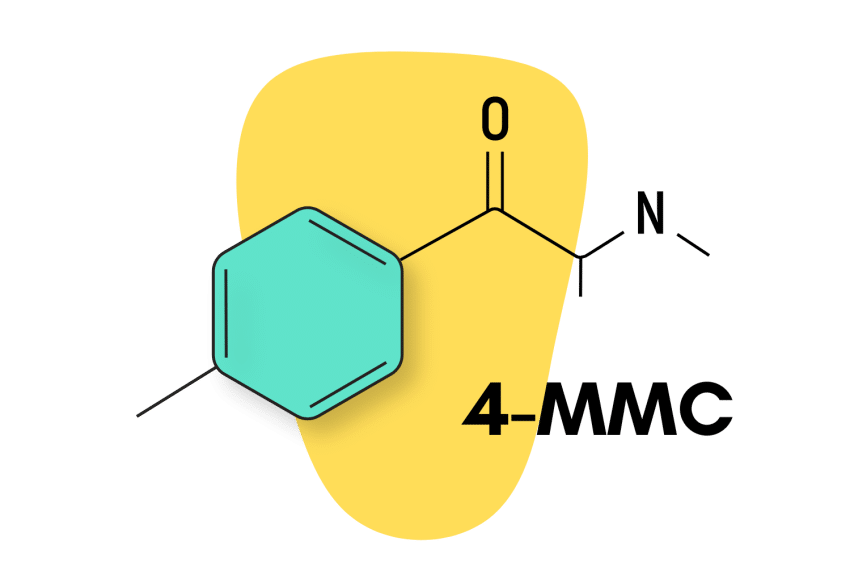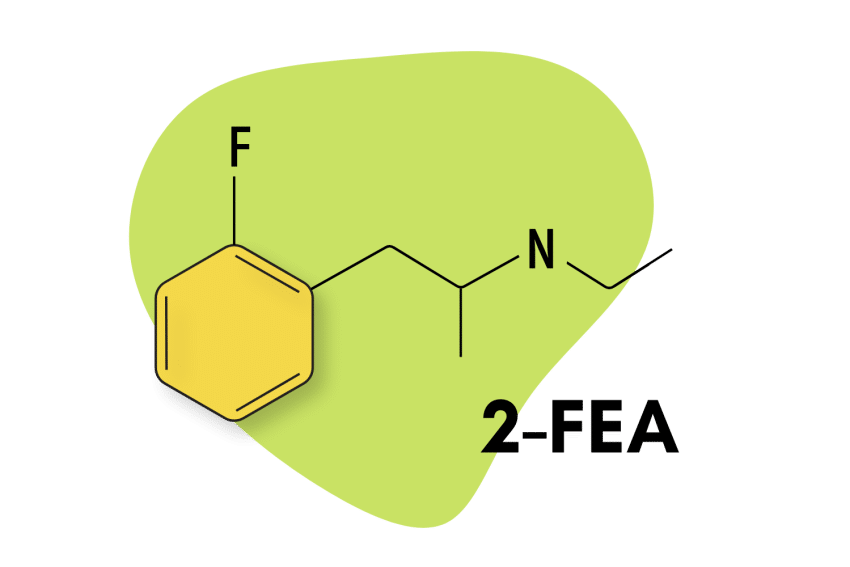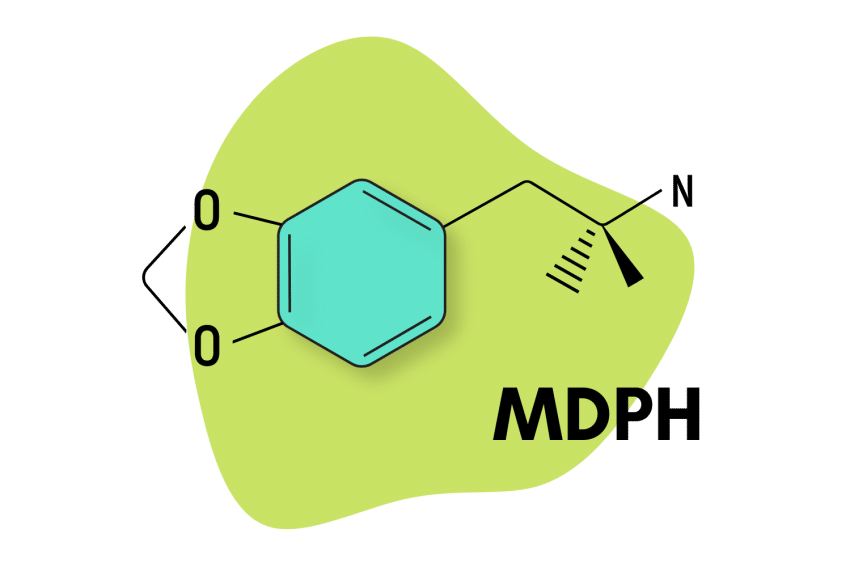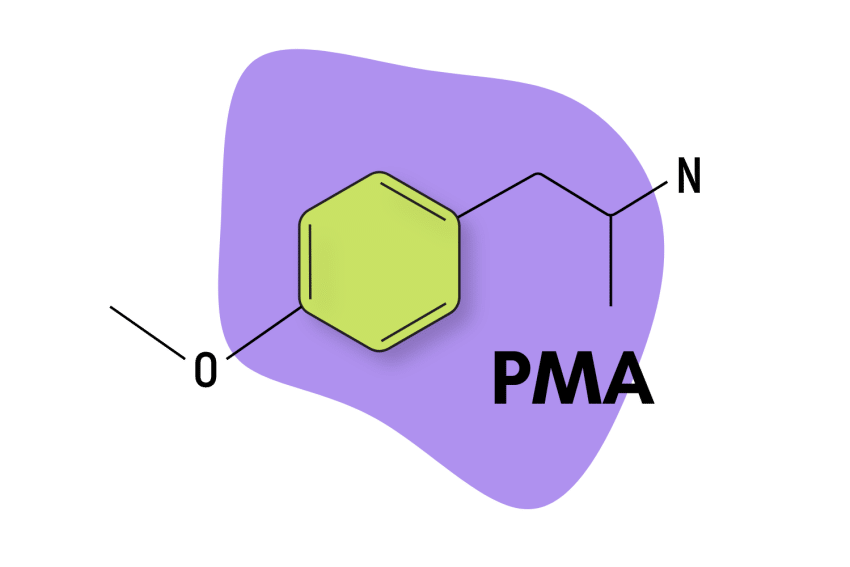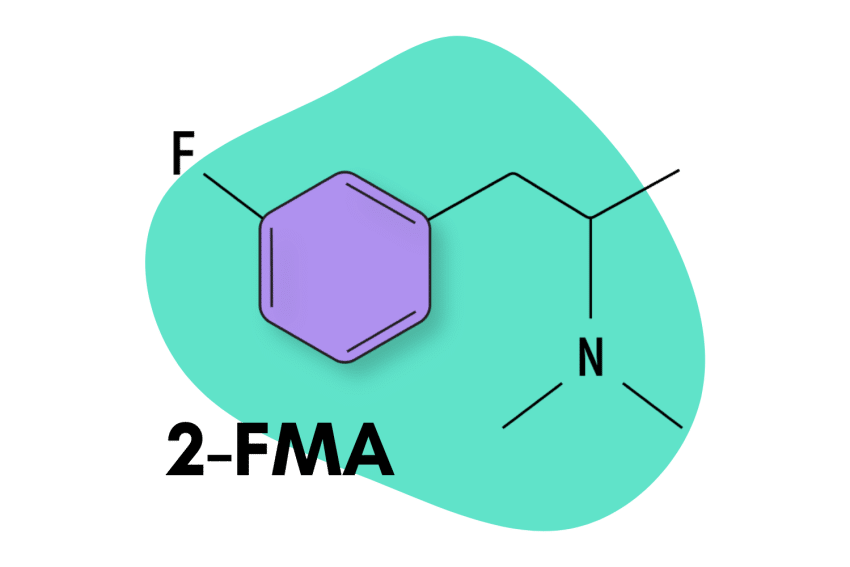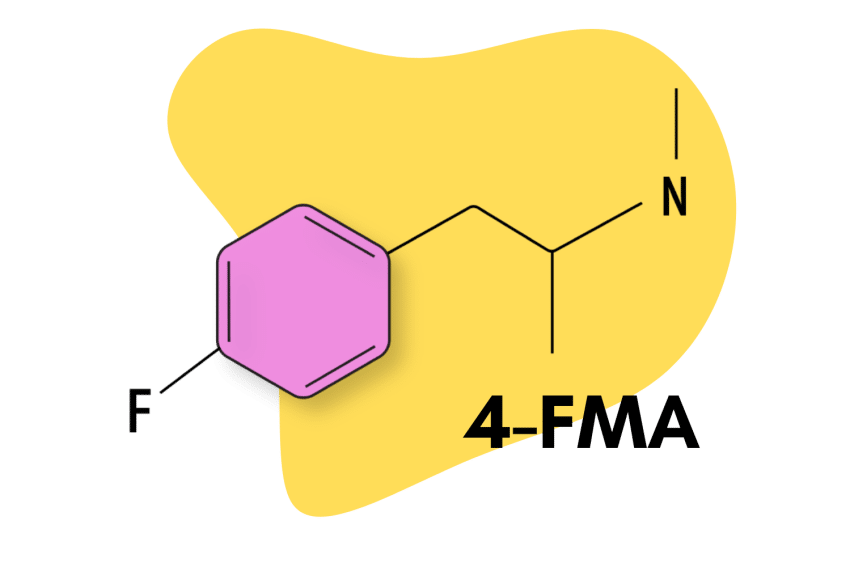TMA-2: An Amphetamine Compound With Unique Sedative Properties
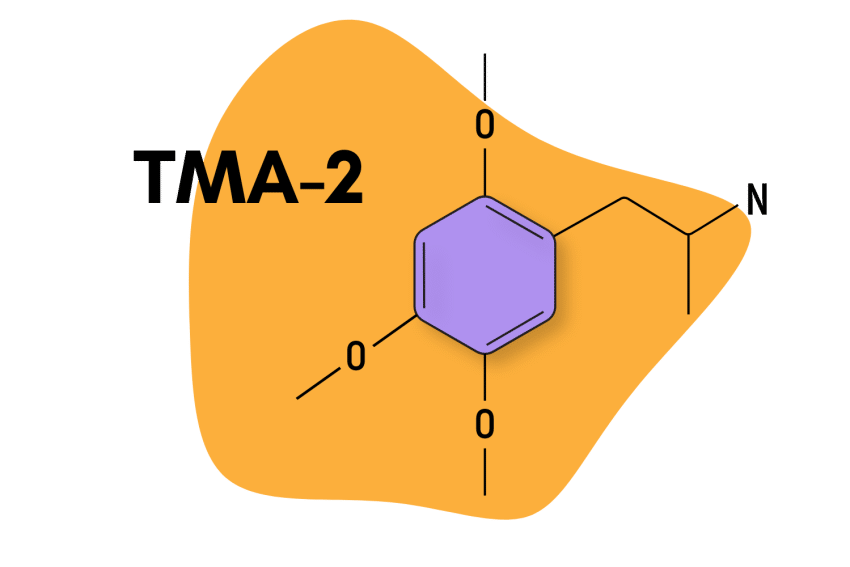
TMA-2 is a trimethoxyamphetamine psychedelic, which itself is a subgroup of the greater substituted amphetamines family.
The trimethoxylated subclass (TMAs) shares various pharmacological characteristics with other psychedelic amphetamines subtypes — such as DOX compounds and the 2C-X series.
Despite clear similarities, the TMAs have a unique effect profile of their own.
Within the psychonaut community, TMA-2 is considered something of an oddity. Not only does it display an unusual range of effects, but it is also a fairly obscure compound that’s hard to manufacture and, thus, exceedingly difficult to find.
Though information is scarce, users often highlight the fact that TMA-2 is one of the rare amphetamine molecules associated with sedative effects rather than the classic stimulating action.
TMA-2 Specs
| Chemical Name | 2,4,5-Trimethoxyamphetamine |
| Level of Risk | Moderate |
| Other Names | N/A |
| Most Common Side Effects | Psychosis, seizures, anxiety, paranoia, agitation, confusion, increased heart rate and blood pressure, palpitations, chest pain, and difficulty breathing. |
| Duration of Effects | Eight to twelve hours |
| Estimated Threshold Dose | 10 mg |
| Common Dose | 20 to 40 mg |
| Legality/Status | Research chemical |
| PubChem ID: | 31014 |
| CAS# | 1083-09-6 |
Tripsitter Safe TMA-2 Guidelines
- 🐍 I understand why substituted amphetamines should be treated with respect
- ⚖️ I’m familiar with the laws for substituted amphetamines in my country & state
- 🍄 I’m familiar with and confident in the dose I’m taking
- 🧪 I’ve tested a sample of the substance I’m using with a drug-testing kit
- 💊 I’m not mixing any medications or other substances with TMA-2
- 🏔 I’m in a safe & comfortable environment with people I trust
- 🐺 One of the members of my group is responsible and sober (AKA a trip sitter)
- ⏳ I have nothing important scheduled for after the trip
- 🧠 I’m in a sound & healthy state of mind
- ❤️ I don’t have any underlying health issues — don’t take TMA-2 if you have underlying heart, neurological, or psychiatric disorders
- 👭 Use the buddy system — TMA-2 can remove your inhibition and allow you to make unsafe decisions, always stay with people you trust, and never go out alone
- 🌵 I understand the risk of dehydration — it’s easy to become dehydrated while on TMA-2, so make sure you’re drinking a cup of water every hour while using TMA-2
- 🦻 Protect your hearing — music can be intoxicating while on TMA-2, so protect your hearing and bring ear protection before you go out to a club or concert
What Are The Effects of TMA-2?
As is common with most NPS (new psychoactive substances), information about TMA-2 in public medical databases is quite scarce. And what little can be found does not focus on the pharmacology or the subjective nature of its effects [1].
Indeed, when it comes to NPS, most research is focused on the viability of different detection techniques, a phenomenon which makes sense when we consider that most of these drugs are so new and so numerous the medical establishment has trouble keeping up.
As such, most of the information regarding the dose, effects, and safety profile for this drug comes from user-generated reports. This information is not reliable, but it offers a good start for determining the profile of this drug. More research is needed.

Many are not aware of this, but the global psychonaut community has actually created a vibrant message board culture. Popular forums like Bluelight, Erowid, and Psychonaut have become hubs where people from all over the world can discuss their experiences with all sorts of recreational compounds.
It’s important to understand that, as a guide into the subjective experience of this or that drug, forum posts give us an insight into what we might feel, not what we are going to feel.
Some of the most common effects reported for this drug include:
- Distortions in the perception of time
- Euphoria
- Increased sociability and empathy
- Nausea and dizziness
- Sedation and fatigue
- Spontaneous body sensations
- Stimulation and increased cognitive energy
- Tactile enhancement
- Visual and auditory enhancements
Related: Learn About TMA-2’s close relative, TMA-6
TMA-2 Trip Reports
We’ve scraped the web for some of the best trip reports we could find involving TMA-2.
User reports for TMA-2 are all over the place, and we get the impression it’s a high-variance compound.
Nevertheless, certain factors did appear consistently:
- Users often felt the psychedelic experience of TMA-2 to be quite manageable and would often wish the effects were stronger.
- Some users report the compound as stimulating, while others feel it to be sedating.
- Physical euphoria and empathogenic effects are present but not as strong as with MDMA.
- The quality of the psychedelia was often likened to mescaline.
TMA-2 Trip Report
My friend said that he thought this would be a good psychedelic for old people, and I laughed, but now I see what he meant. It’s rather slow, doesn’t feel very taxing, and is suited to a quiet night at home listening to music and snuggling with your partner. It’s a little like MDMA but not as intense. My favorite thing about it was the relaxed character of it, the gentle rushing, and the sensual, tactile enhancements. I liked how it wasn’t pushy like MDMA; it is like mescaline in that sense, a gentle opening of perception that may be too subtle for some folks.
The peak of the experience has fully developed now. At this point, TMA-2 reminds me a lot of methallylescaline. I haven’t tried mescaline yet, but I imagine this is pretty similar. The CEVs are more inviting and colorful than before. They’re still rather unappealing and simple, though.
The trip is very positive and strongly euphoric, almost entactogenic. Again, this reminds me a lot of methallylescaline, only with no nausea or stomach issues. TMA-2 has a darker and more mysterious vibe, though. It’s very pleasurable, don’t get me wrong. As the peak settled in, TMA-2 changed quite a bit in character. It’s in full swing, and I enjoy it very much. The effects could be stronger, though.
The body load is heavy and tiring in parts. The whole trip has not been stimulating at all for me; I actually find it rather sedating. I just took a shower because my body temperature regulation seemed off. Mental and physical euphoria are still persisting. Headspace is unchanged. Still rather hypnotic and intoxicating, although clear at the same time. If I had to rate this experience on the Shulgin Rating Scale at the moment, I would say I’m at a decent ++
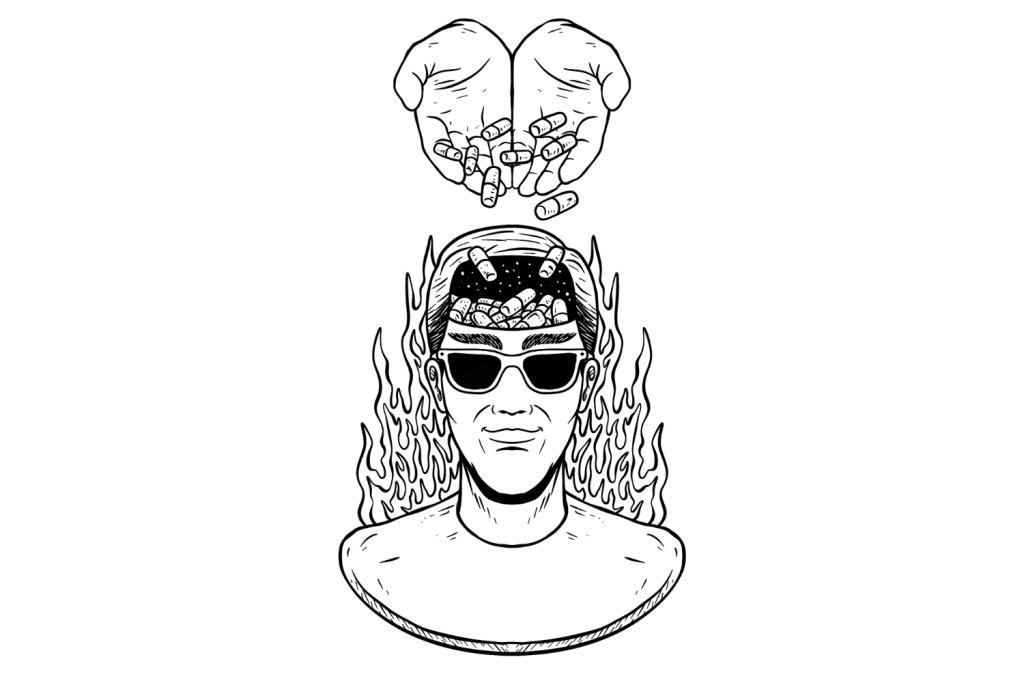
Is TMA-2 Safe? Risks & Side Effects
In general, TMA-2 is not a high-risk psychedelic, but it does carry the risk of overdose or unwanted side effects — especially when abused, taken in high doses, used in conjunction with other medications or illicit substances, or if used by those with pre-existing heart, neurological, psychiatric, liver, or kidney disease.
A 2004 report by the EMCDDA (European Monitoring Center for Drugs and Drug Addiction) had this to say about the safety profile of TMA-2:
- There have been no reported deaths or instances of non-fatal intoxication involving TMA-2.
- The locomotor increase (which is less significant than amphetamine-induced hyperactivity) may also be due to 5-HT receptor stimulation. The highest TMA-2 doses (80 mg/kg) induce frequent clonic convulsions. A dose of 120 mg/kg was associated with fatal toxic effects.
- In rats, even low i.p. doses of TMA-2 (2 mg/kg) induce significant bradycardia, especially when the ambient temperature is low (at 18 °C, the decrease is from 500 bpm to 250 bpm). The intensity of the bradycardia does not vary much with low or high (80 mg/kg) doses of TMA-2.
- The amphetamine thermoregulatory response is usually hyperthermia, even if low doses of serotonergic agents may induce hypothermia. Whereas, in rats, when the ambient temperature is low (18 °C), low and high TMA-2 doses (2–80 mg/kg) induce significant hypothermia (33 °C; compared with 38 °C for the saline control group).
Cardiovascular Side Effects
One of the main risks associated with TMA compounds is their potential to cause cardiovascular side effects. These drugs can increase heart rate and blood pressure, which can be particularly dangerous for people with pre-existing cardiovascular conditions.
In extreme cases, TMA compounds can cause heart attacks, stroke, or other cardiovascular events.
Neurotoxic Effects
TMA compounds can also have neurotoxic effects. Animal studies have suggested that some TMA compounds can cause damage to certain types of brain cells, particularly those that produce dopamine, a neurotransmitter that is involved in movement, motivation, and pleasure.
While the extent to which these effects translate to humans is not entirely clear, some researchers have expressed concern about the potential long-term effects of TMA compound use on brain function.

Other Side Effects
Other potential health risks associated with TMA compounds include psychological effects such as anxiety, paranoia, and psychosis, as well as physical effects such as nausea, vomiting, and muscle tension.
Inherent Risks of Unregulated Research Chemicals
TMA-2 is a research chemical. There are no registered manufacturers or vendors selling this substance.
This means all TMA-2 was made in a clandestine lab. These labs often lack safe manufacturing practices and may purposely introduce adulterants or fail to remove harmful byproducts effectively.
This means the purity and potency of every TMA-2 sold on the streets is in question.
References
- Ewald, A. H., Fritschi, G., & Maurer, H. H. (2006). Designer drug 2, 4, 5-trimethoxyamphetamine (TMA-2): Studies on its metabolism and toxicological detection in rat urine using gas chromatographic/mass spectrometric techniques. Journal of mass spectrometry, 41(9), 1140-1148.

